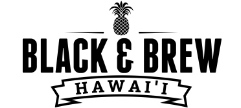Yeast? You mean da ting dat stay in bread?
Yeah.
Why dat stay in my beer?
Well, we like to call yeast beer’s best friend.
How it happens?
Yeast aids in the beer making process through fermentation. Fermentation can be defined as the breakdown of sugars, such as glucose and maltose, into carbon dioxide and alcohol. This is where we get alcohol! For those of you who got C’s in chemistry like I did, fermentation, in this context, can simply mean yeast turns sugar into carbon dioxide and alcohol. [For you nerds who want to learn more, search for Louis Pasteur, diffusion, glycosis, pyruvates, and anaerobic; I know the last term because I’ve studied environmental engineering with an emphasis in poop, but I digress.] These two waste-products constitute the basis of fermentation in beer making. When the process of fermentation is complete, a lot of other by-products are also formed, and each by-product is responsible for producing certain characteristics of a beer.
Yeast belongs to the fungi family and is a very interesting organism; the central characteristic of yeast is the ability to reproduce asexually through a process called budding. The process of budding divides the original single cell of yeast into other cells. It is also interesting to look at the behavioral aspects of yeast, as it has the ability to survive with or without oxygen, making it the perfect candidate for the brewing process.
Types:
In essence there are two types of beers. Perhaps you have sat down at a restaurant and the waiter asked you for your beer order. If you’re like me, you’d ask, “What’s good?” And then another question is presented you, “Do you like ale or lager?” Well, my friend, here’s where I help you sound smart.
Ale and Lager are the two basic types of beers brewed, and the main difference is the type of fermentation process that takes place for each. The first thing to note, and what many will tell you, is that ale is fermented through the process of top fermentation. This basically means that yeast is applied on the surface, or top of the wort, at high temperatures. (Wort is the sugar-rich liquid taken from the grain and water mixture portion of brewing, also known as mashing.) But I digress again. Lager is a form of beer that is fermented with bottom-fermenting yeast applied at the bottom of the wort. But that’s not all. Lager is fermented at relatively lower temperatures than ale, and takes a little longer to age than ale would take. The ale is understood to have more flavors, and lager is generally known to have a crispier taste.
It isn’t surprising that the two beers have different tastes. Both types of fermentation result in certain different by-products. And given different environment and conditions, they essentially form a distinct taste. So there you go. Yeast is used in order to get alcohol and carbonation.

